
SpaceX continued an impressive start-of-the-month cadence with its third Falcon 9 flight inside May’s opening week, launching a 15-times-flown booster early Monday out of from storied Space Launch Complex (SLC)-40 at Cape Canaveral Space Force Station, Fla., hours before Boeing’s Crew Flight Test (CFT) mission is set to fly from neighboring SLC-41 with NASA astronauts Barry “Butch” Wilmore and Suni Williams. The B1069 booster—almost lost at the close of her first flight three years ago—lifted off at 2:14 p.m. EDT, laden with 23 Starlink internet communications satellites and returned eight minutes later to alight on the expansive deck of the Autonomous Spaceport Drone Ship (ASDS), “Just Read the Instructions”, situated offshore in the Atlantic Ocean.

It marked the 45th Falcon 9 mission inside the year’s 18th week, a pace which thus far has seen SpaceX fly on average every 2.8 days and sets the Hawthorne, Calif.-headquartered organization well on track to achieve up to 130 launches before the end of 2024 on the present cadence. However, Elon Musk has made no secret of the fact that he is targeting up to 144 flights before the New Year’s Eve bell tolls, a substantial uptick over 2023’s record-setting 96-launch year that demands a flight every 2.5 days or so.
Today’s mission also marked the third Falcon 9 to take flight so far in May’s opening few days. It follows on the coattails of last Tuesday’s pair of launches—only eight hours apart—of a pair of boosters from the Cape and Vandenberg Space Force Base, Calif., laden with the 30th Starlink batch of the year and the first two members of Maxar’s WorldView Legion geospatial imaging constellation.
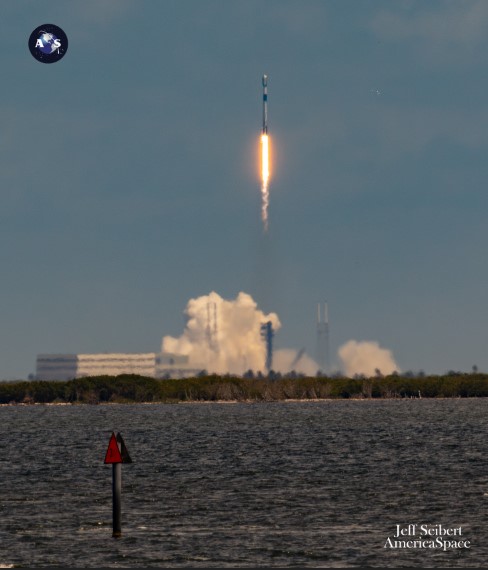
Weather conditions for today’s launch proved highly favorable, with a 90-percent probability of acceptability through an expansive “window” that extended from 12:36 p.m. EDT until 2:48 p.m. EDT and the same odds for a backup opportunity set to open Tuesday at 11:08 a.m. EDT. In readiness for launch, the drone ship “Just Read the Instructions” departed Port Canaveral on Friday afternoon, bound for a recovery position some 380 miles (600 kilometers) offshore in the Atlantic Ocean.
“High pressure will set up to the north and east today,” noted the 45th Weather Squadron at Patrick Space Force Base in an L-1 update, issued early Sunday morning, “allowing the local weather to be dominated by the steering flow around the ridge. This pattern will persist into Monday and Tuesday.

“While the overall weather looks favorable for the initial and backup launch windows, there is a small risk of cumulus cloud development with the budding afternoon sea breeze,” it was added. “As a result, the only concern for both launch windows will be for the Cumulus Cloud Rule.”
However, SpaceX elected to aim for a T-0 point at 2:14 p.m. EDT and extended the closure point of Monday’s window to 3:14 p.m. EDT. “Less than an hour remaining in the count,” SpaceX tweeted at 1:24 p.m. EDT. “All systems are ready and weather in Florida is looking fantastic for today’s Starlink launch.”

B1069 roared uphill at 2:14 p.m. EDT, becoming only the eighth booster in SpaceX’s fleet to reach a 15th mission. Two and a half minutes later, she separated smoothly from the stack and pirouetted to a pinpoint touchdown on the deck of JRTI, as the Merlin 1D+ Vacuum engine of the Falcon 9’s second stage executed a lengthy six-minute “burn” to deliver the 23 Starlinks into orbit.
For B1069, reaching 15 launches is an impressive figure she came close to never seeing at all. She entered SpaceX’s fleet in December 2021, delivering the research-laden CRS-24 Cargo Dragon on the first leg of its month-long stay at the ISS. But she was almost lost seconds after touchdown, when she came within a hair’s breadth of missing the deck of the drone ship and toppling into the ocean.

The incident necessitated substantial repairs—including a brand-new suite of Merlin 1D+ first-stage engines—before B1069 re-entered service to log three missions in the second half of 2022: emplacing 54 Starlinks to orbit in August of that year, Eutelsat’s Hotbird 13F geostationary communications satellite the following October and 40 broadband satellites in December for London, England-based OneWeb.
Eight more flights followed for B1069 last year, including seven Starlink batches and the dual-stacked SES-18 and SES-19 geostationary communications satellites for Luxembourg-based provider SES. Two of her 2023 missions set new records in March and December for the shortest interval between pairs of SpaceX launches.
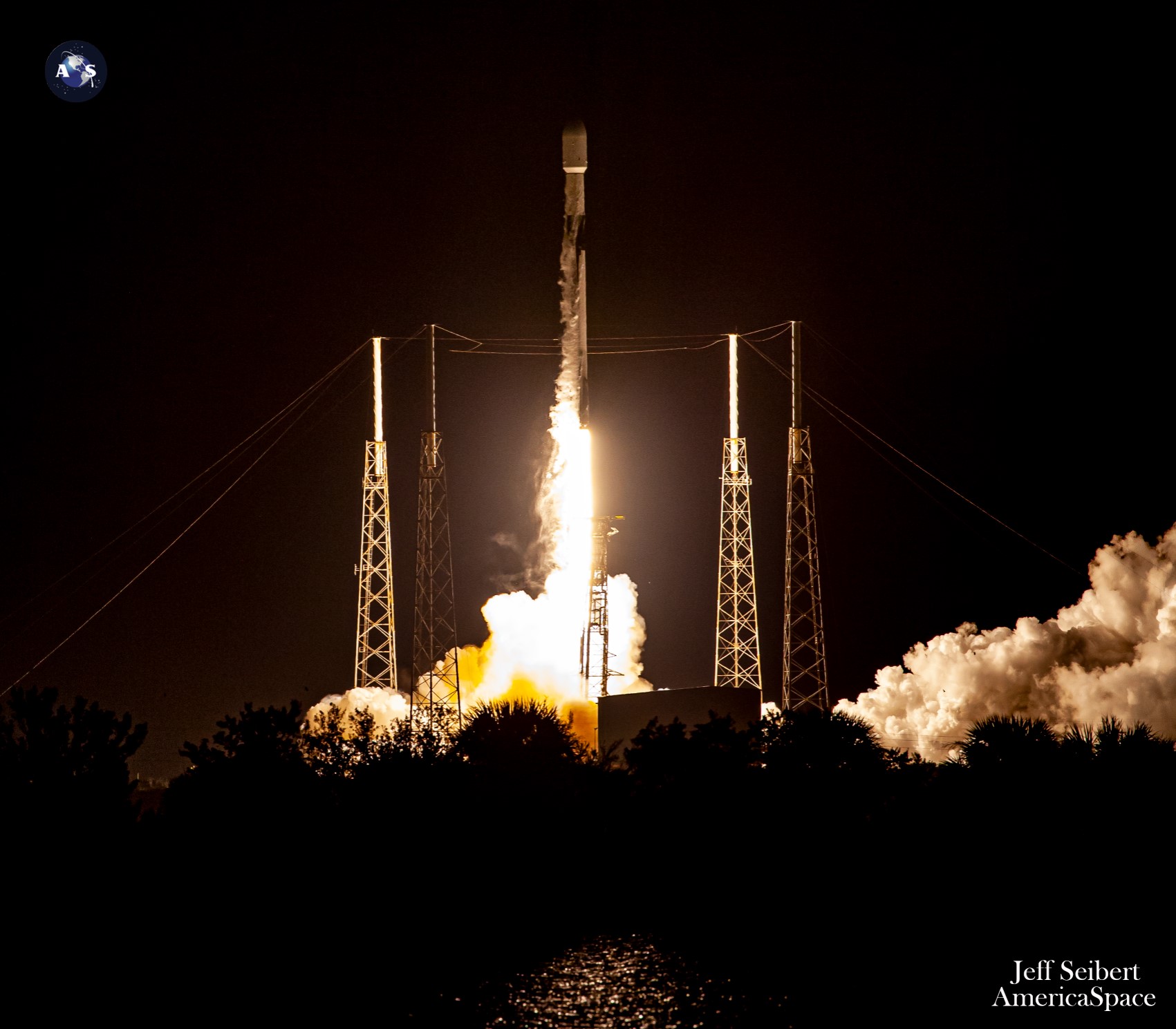
She has also logged three more missions so far this last spring, bringing her Starlink “count” to almost 400 launched in 11 discrete batches. Today’s launch also saw B1069 achieve a personal-best turnaround as she flew again barely a month—31 days, to be precise—since her most recent flight in the first week of April.
Deployment of the 23 Starlinks was accomplished at 65 minutes and 23 seconds after launch, bringing to more than 600 the total number of these flat-packed internet-providing satellites lofted to orbit so far this year.
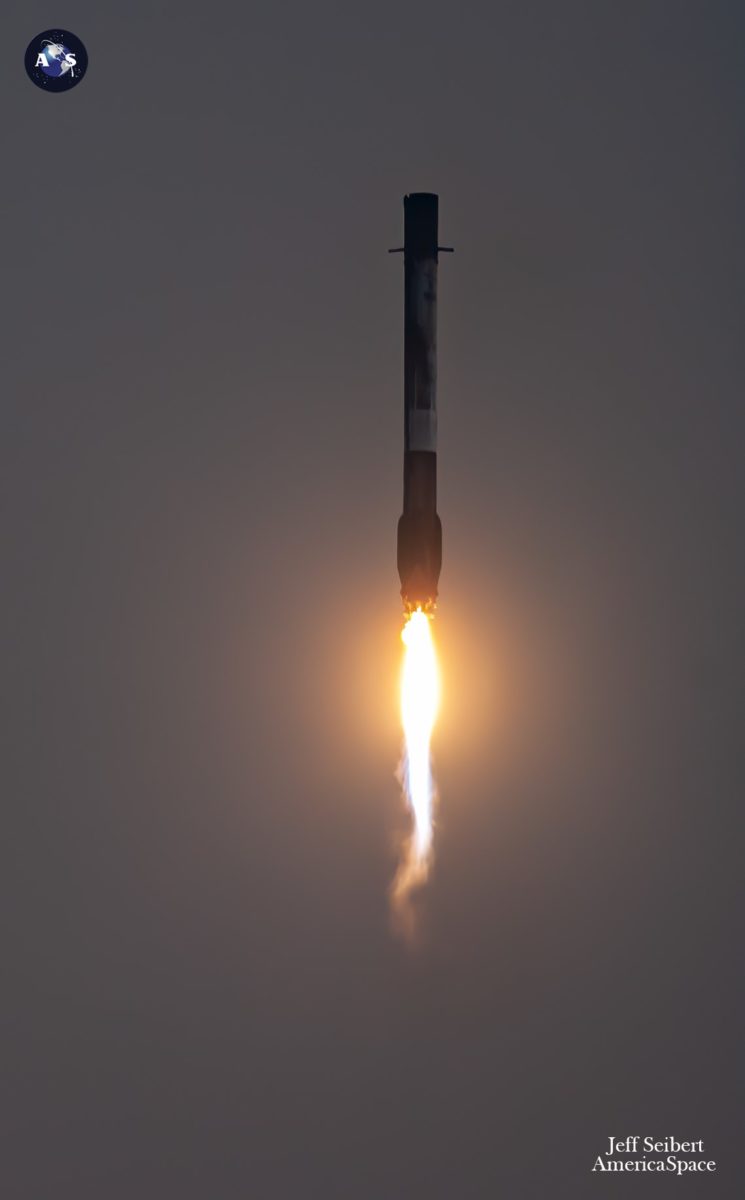
As a network, Starlink enables high-speed and low-latency internet provision to over 70 sovereign nations and international markets in North and South America, Europe, Asia, Oceania and Africa. Last month, the Hawthorne, Calif.-headquartered launch services provider announced that Starlink connectivity is now available in Albania and Micronesia, bringing to 75 the total number of sovereign nations or regions to receive coverage.
The downsized V2 Mini satellites, first flown in February of last year, boast three to four times greater “usable” bandwidth than earlier Starlink iterations. “V2 Minis include key technologies—such as more powerful phased-array antennas and the use of E-Band for backhaul—which will allow Starlink to provide 4x more capacity per satellite than earlier iterations,” SpaceX explained. “Among other enhancements, V2 Minis are equipped with new argon Hall thrusters for on-orbit maneuvering.”
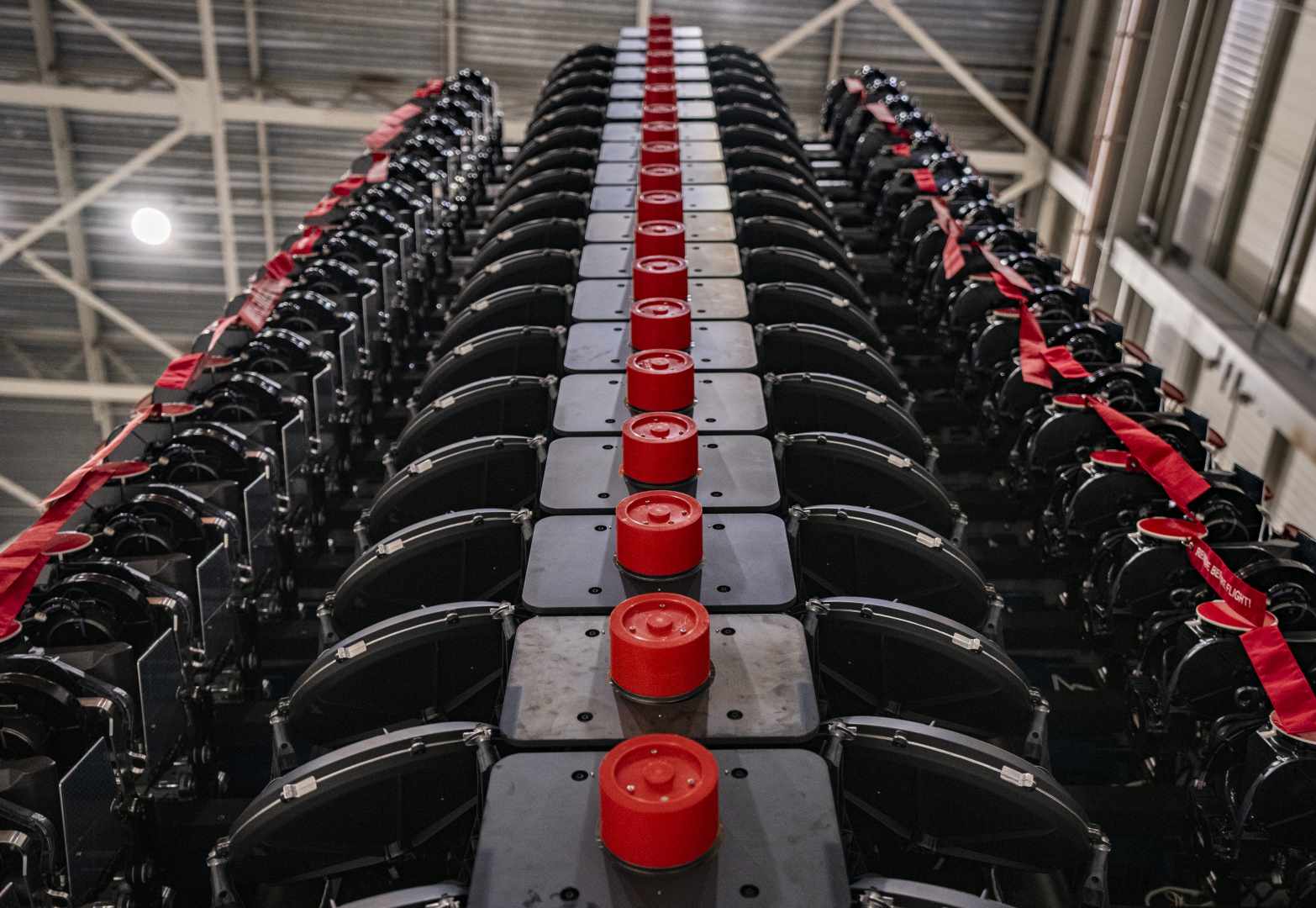
Florida-based intercity operator Brightline adopted Starlink on its trains in 2023, the first passenger rail service in the world to do so. Additionally, El Salvador’s Ministry of Education has begun integrating Starlink capability into its schools to help close the digital divide between urban and remote rural communities and 50 Rwandan schools are now connected via Starlink’s high-speed internet service.
And in January, SpaceX lofted its first six “Direct-to-Cell” Starlinks, which permit mobile network providers to offer “seamless global access to texting, calling and browsing”, whether “on land, lakes or coastal waters”, without the need to change hardware or firmware. Within six days of that first launch, SpaceX engineers sent and received their first text messages via Direct-to-Cell and as of April Starlink reportedly had about 2.7 million registered subscribers or customers worldwide.
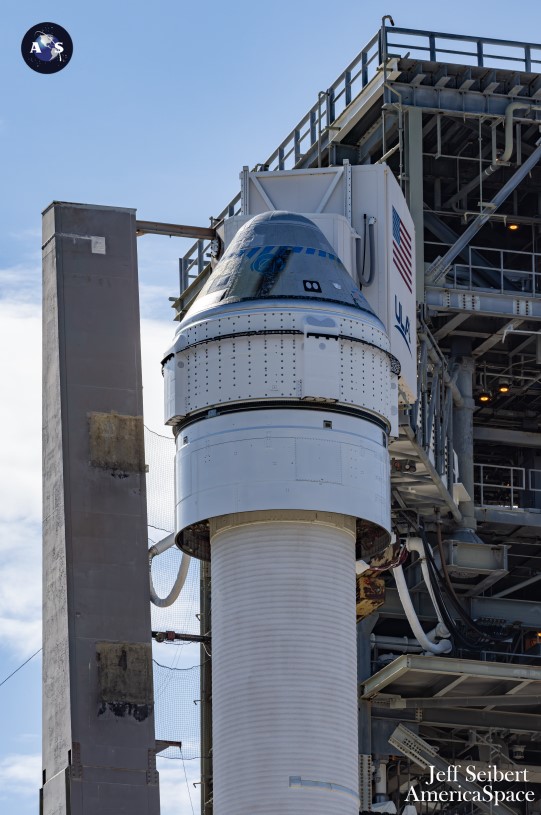
As the smoke and dust clears from SLC-40, attention now turns to the Cape’s neighboring SLC-41, where United Launch Alliance (ULA) is readying its 172-foot-tall (52.4-meter) Atlas V to lift Boeing’s CST-100 Starliner on the long-awaited Crew Flight Test (CFT) to the International Space Station (ISS). Veteran NASA astronauts Barry “Butch” Wilmore and Suni Williams will spend at least eight “docked” days aboard the space station, putting Starliner through a multitude of critical flight tests to complete its end-to-end certification before regular long-duration crewed missions sometime next year.






I SAW IT GO UP AND THOUGH I HAD THE WRONG TIME FOR THE CREWED LAUNCH IT LOOKED GREAT AS USUAL LOOKING FORWARD TO THE EVENING OR NIGHT LAUNCH OF THE DRAGON
Dragon or Boeing’s Starliner ? That got scrubbed.